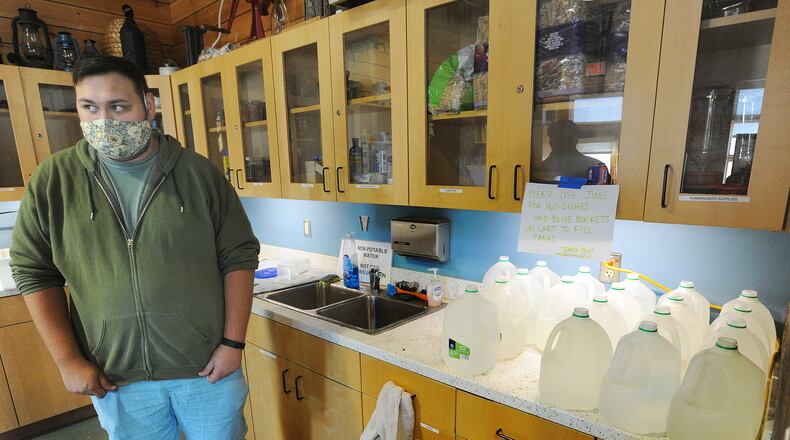Officials have not determine the source of the contamination. But testing the wells is a “great first step” to making that determination, said Abinash Agrawal, an earth and environmental sciences professor at Wright State University.
“That provides all of the clues that you need for a preliminary analysis,” said Agrawal, a ground water contamination and remediation expert.
Exposure to PFAS or ― per- and polyfluoroalkyl substances ― can affect pregnancy, increase cholesterol levels and cause some forms of cancer, according to the Centers for Disease Control and Prevention. Infants and children, pregnant and nursing women, and those who have a compromised immune system might be at a higher risk of health effects from PFAS exposure, health officials said.
Shortly after PFAS were discovered in Aullwood’s water system, the Ohio Department of Health and Public Health-Dayton & Montgomery County sent letters to the 180 homeowners explaining the issue and the importance of testing their wells.
The Ohio Environmental Protection Agency had detected two PFAS compounds at combined levels of 96 parts per trillion. The federal suggested level is to stay below 70 ppt. A part per trillion is the equivalence of a grain of sand in an Olympic-size pool or a pinch of salt in 10 tons of potato chips.
Aullwood’s drinking water system was among 1,553 public water systems the Ohio EPA tested in 2020 as part of its PFAS action plan. The center’s system was one of two in the state with PFAS levels that exceed 70 ppt. Twenty-three other systems across Southwest Ohio had levels of the contaminants below that level.
Testing private wells is typically the responsibility of homeowners. But the ODH, in consultation with Gov. Mike DeWine’s office, chose to test some wells because there’s no indication that the PFAS discovered at Aullwood is an ongoing problem in the area or across the state, Dan Tierney, the governor’s spokesman, told the Dayton Daily News in November.
Testing and treatment combined for the potentially deadly chemicals alone can cost as much as $2,000. That’s in addition to various other contaminants health officials recommend homeowners test for regularly.
It’s not clear at this time why the state chose to test the 18 wells or how they decided which ones to sample. State officials did not respond to a Dayton Daily News email asking for explanation of the process.
ODH contractors collected the 18 samples on Jan. 21 and delivered them to the Ohio EPA Division of Environmental Services lab the same day, said Melanie Amato, an ODH spokesperson. The analysis will take about 30-days, and the state will share the results and an explanation with homeowners in a letter, she said.
“The results will also be shared in a de-identified fashion with the community as they will help to better define the impacted area,” Amato said, noting that the Ohio EPA will be the lead on where the source is.
In addition, the ODH and Ohio EPA have had some preliminary discussions about a possible virtual public meeting to discuss the results and recommendations. However, that plan has not been finalized, and there will be more discussions, likely based on the sample results before they make a final decision, Amato said.
About the Author
